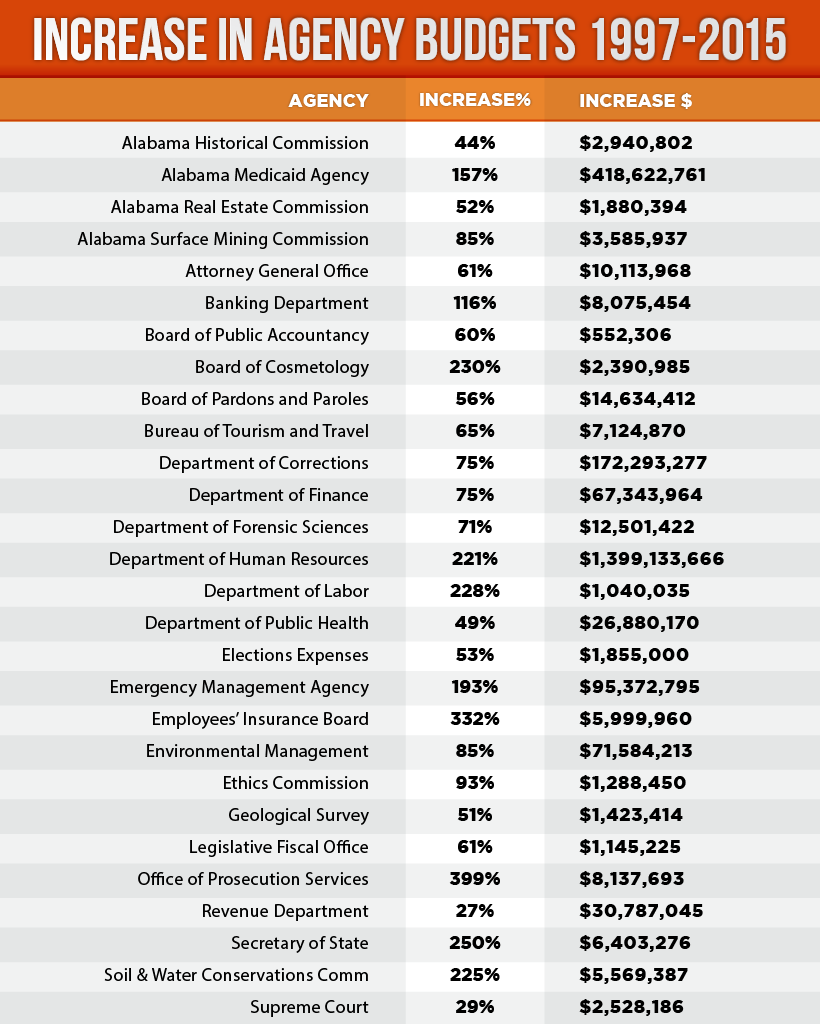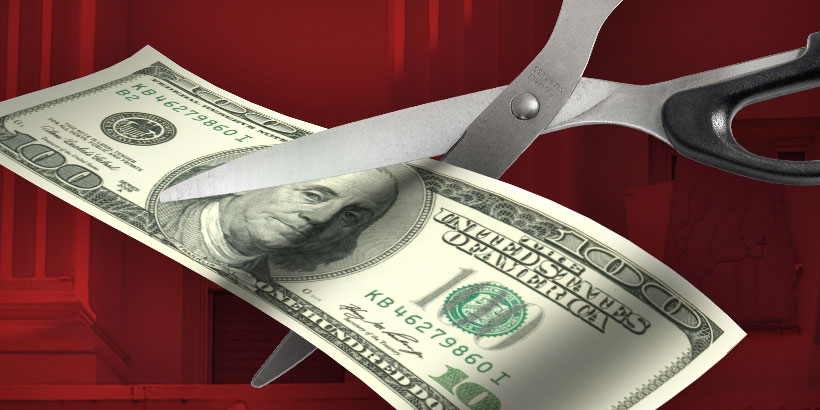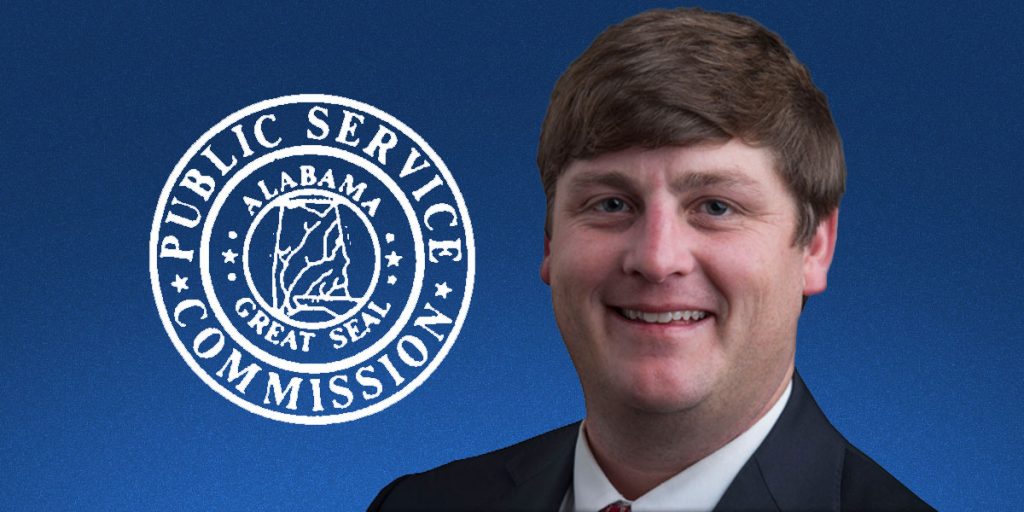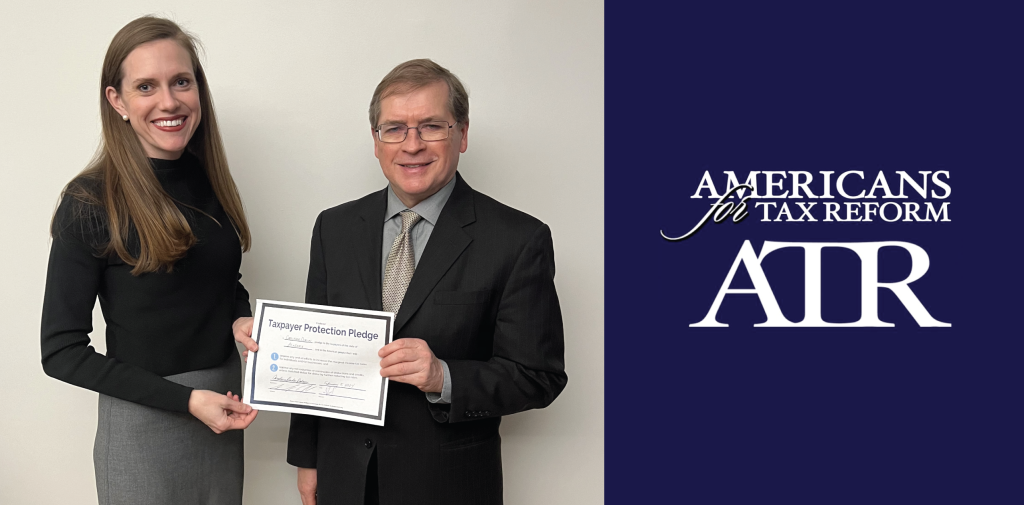MONTGOMERY, Ala. — Alabama lawmakers have spent most of 2015 searching for ways to fill a $200+ million hole in the state’s General Fund budget. From proponents of tax increases to gambling expansion advocates, many state government officials — Republicans and Democrats, alike — have insisted that further cuts to state government would be catastrophic.
There is nothing left to cut, they say. Alabama’s government is already as small and inexpensive as it can possibly get.
A study Yellowhammer shared last month suggests this is not the case. According to Americans for Tax Reform, Alabama’s state government spending has increased 21 percent faster than the rate of inflation since the late 1990s.
Now, a new analysis by Yellowhammer reveals that even after adjusting for inflation, many state government agencies receiving funds through the beleaguered General Fund have grown exponentially since 1997.
Note: All dollar amounts below are according to the Alabama Department of Finance Executive Budget Office.

In fairness, several of these agencies receive funding through “earmarks.” Alabama earmarks over 90 percent of its revenue, mandating certain taxes be spent on certain programs, no matter what. That is by far the highest percentage of any state in the country, leaving legislators very little flexibility to set spending priorities.
The Board of Cosmetology, for example, receives its revenues through the fees paid by hairdressers and beauticians who register with the board. If Alabama attracts more hairdressers, the Board’s revenues increase.
Other massive increases may be attributable to a change in federal mandates, or a drastic disturbance of the economy.
But not every agency or department has grown faster than the rate of inflation. The Alabama Public Service Commission (PSC), for example, has slashed its budget by approximately $3.39 million, 29 percent in inflation-adjusted terms, over the same time period.
But the question remains, had the agencies listed above simply grown at the pace of inflation (approximately 2.2 percent annually, on average), how much lower would Alabama’s yearly government spending actually be?
$1.75 Billion.
That is roughly seven times the size of the current “shortfall.”
In other words, if Alabama’s state government was the same size today as it was in 1997, adjusted for inflation, the General Fund would be enjoying a billion dollar surplus.
Legislators will return to Montgomery in a few weeks for a second Special Session aimed at passing a budget, after an earlier budget balanced entirely based on cuts was vetoed by Gov. Robert Bentley. The current Fiscal Year ends Oct. 1.
Like this article? Hate it? Follow me and let me know how you feel on Twitter!
— Elizabeth BeShears (@LizEBeesh) January 21, 2015













